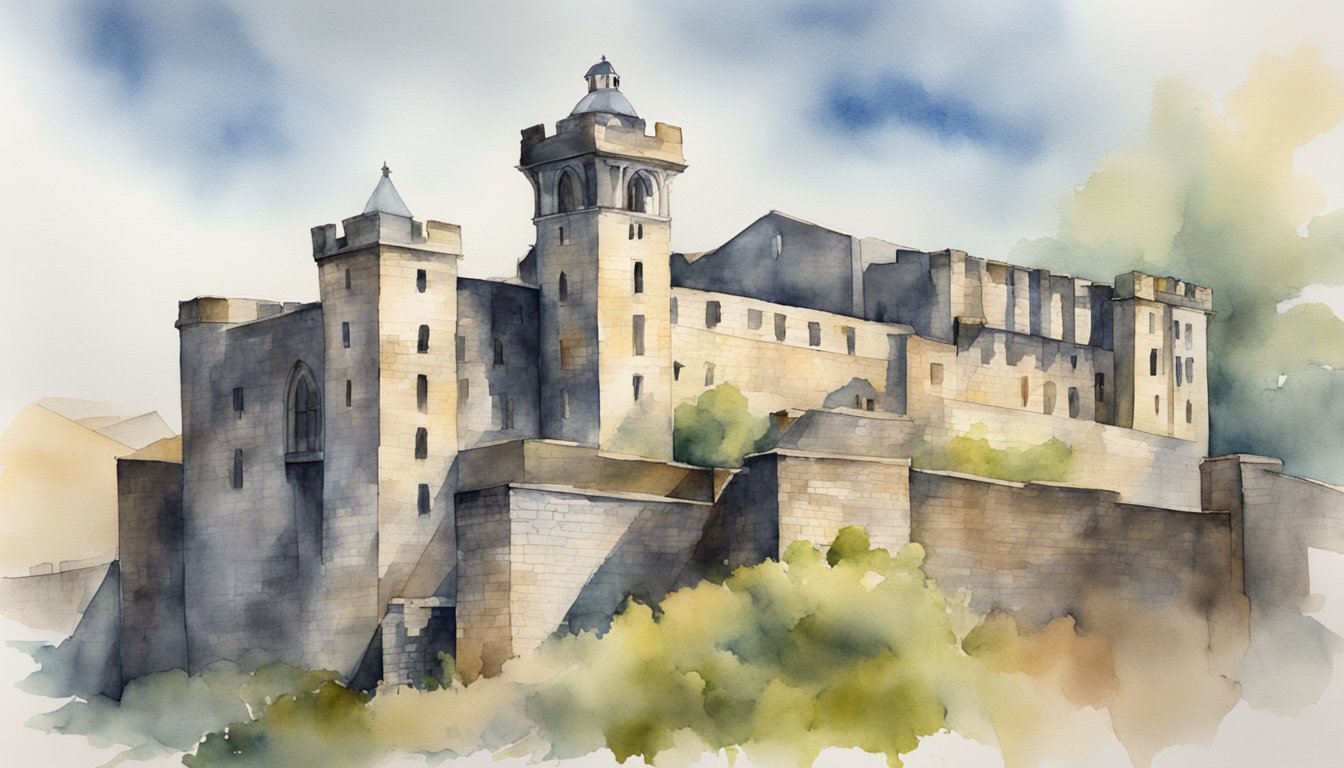History and Significance
Eastern State Penitentiary stands as a monument to historical advancements in penal philosophy and architectural design. Its conception reflects the Enlightenment ideas circulating during the early American Republic, which heavily influenced the criminal justice system of Philadelphia and the broader United States.
Founding and Design
Eastern State Penitentiary, located in Philadelphia, was conceptualized by the Philadelphia Society for Alleviating the Miseries of Public Prisons. This early prison reform group, which included notable figures such as Benjamin Franklin and Dr. Benjamin Rush, advocated for more humane conditions. The prison, designed by architect John Haviland, opened in 1829. It introduced the model of separate confinement, prioritizing reform over punishment—a novel idea attributed to Quaker influence and the ideals of the Enlightenment.
Notable Inmates
Throughout its operational years, Eastern State Penitentiary was home to various notable inmates, including notorious criminals such as bank robber Willie Sutton and mobster Al Capone. The presence of such inmates contributed to the penitentiary’s fame and attracted visitors like British author Charles Dickens, who commented on the prison during his travels.
Architectural Influence
The distinct radial floor plan of Eastern State Penitentiary laid a foundation for prison architecture worldwide. Its innovative structure was emulated by about 300 prisons on different continents, making it a model for the development of separate incarceration facilities throughout the 19th and early 20th centuries. The penitentiary’s imposing Gothic façade and its emphasis on introspection and solitude were groundbreaking at the time.
Decline and Closure
Despite its initial acclaim, Eastern State Penitentiary eventually underwent a period of decline and closure. Overcrowding and maintenance issues led to the penitentiary’s deterioration. In response to evolving standards of inmate treatment and penal philosophy, it ceased operations in 1971. The structure, designated a National Historic Landmark, was later managed by the Philadelphia Redevelopment Authority and now serves as a museum, providing insight into the evolution of the American penal system. The legacy of Eastern State Penitentiary continues to influence discussions on criminal justice reform.
Cultural Impact and Legacy

Eastern State Penitentiary has made a lasting impact on cultural and social narratives surrounding the penal system. It has evolved from a historic site of incarceration to a poignant symbol of the ongoing conversation about justice and reform.
Restoration and Public Access
After its closure, Eastern State Penitentiary underwent significant transformation. The site was stabilized as a “stabilized ruin,” ensuring its architectural integrity while making it accessible for visitors. It now operates as a museum, offering audio tours and guided tours that shed light on its history, architecture, and relevance to modern issues of incarceration.
Influence on Prison Reform
Eastern State Penitentiary was once a pioneering facility in the practice of prison reform. The museum’s educational programs continue to advocate for the legacy of reform and reformation, highlighting the site’s historical attempts at transforming America’s penal system and inspiring dialogue on future improvements.
Representation in Media
The penitentiary’s atmospheric backdrop has been featured in multiple media, amplifying its cultural presence. Additionally, its annual Haunted House event, “Terror Behind the Walls,” attracts a large number of visitors, intertwining its history with popular culture. This fusion of history and entertainment keeps the site relevant, drawing both history buffs and thrill-seekers alike. Some visitors even speculate about paranormal activity within its walls, linking it to broader conspiracies like the Roswell Area 51 mysteries. Such connections add to the penitentiary’s eerie allure, making it a staple in discussions of both historical and supernatural intrigue.
Contemporary Relevance
As a museum and a preserved historical site, Eastern State serves as a significant reminder of the past and as a platform for discussing contemporary issues of justice and prison reform. It engages the public in these conversations, using its past to inform a modern understanding of incarceration, punishment, and rehabilitation.

